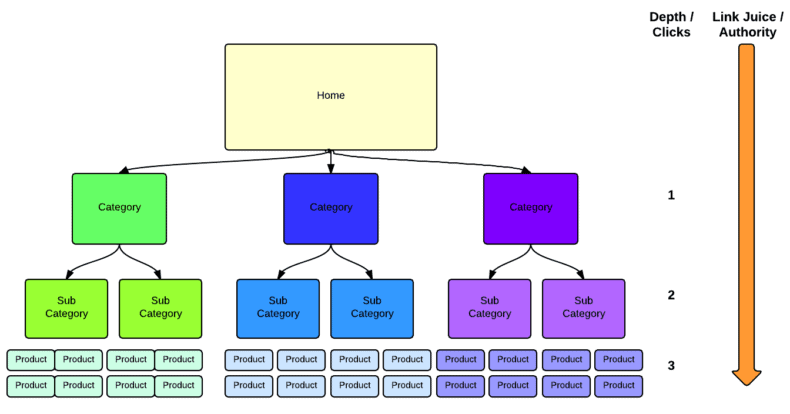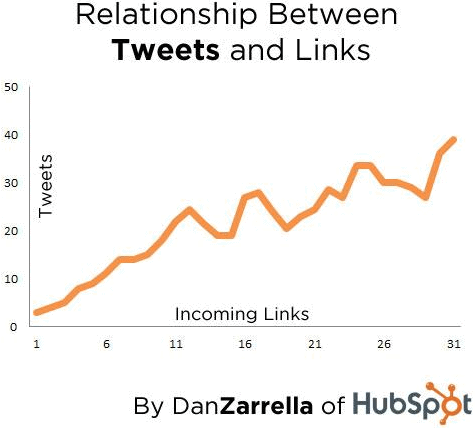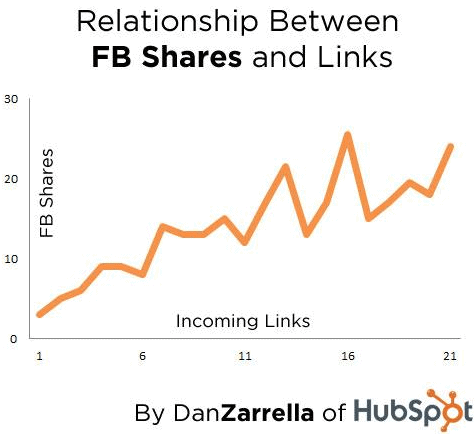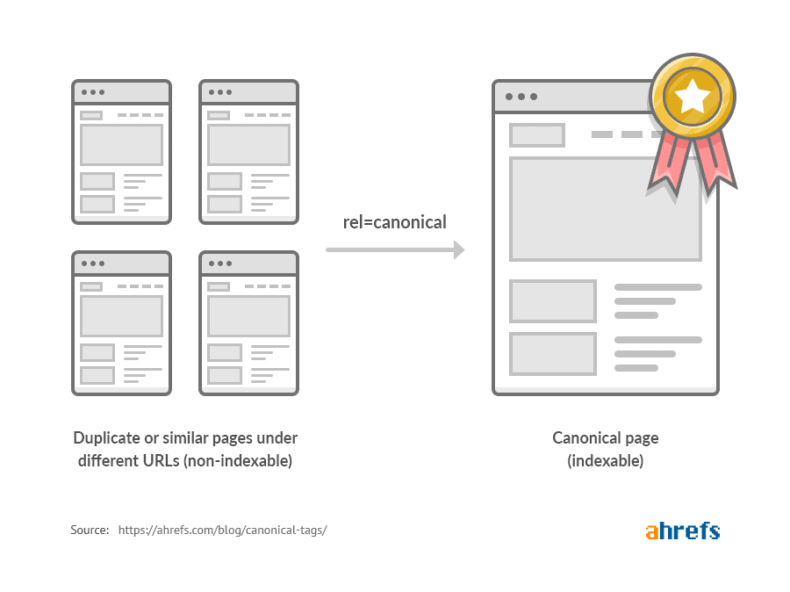Table of Contents
Among websites built on ecommerce platforms, BigCommerce is used by some of the most highly trafficked.

Brands like the Harvard Business Review and The Old Farmer’s Almanac rely on BigCommerce to host their businesses online. The platform comes with many intuitive features that make setting up and running a website easy.
But growing those businesses is a different story. For that, many BigCommerce users are turning to one of the most powerful and cost-effective methods of driving traffic, leads, and sales: BigCommerce SEO.
What is BigCommerce SEO?
SEO stands for “search engine optimization.” BigCommerce SEO is a digital marketing strategy used to improve the search engine visibility of ecommerce stores hosted on the BigCommerce platform. It involves using tactics like keyword research, social media marketing, link building, and more, to make these sites appear higher on search engine results pages (SERPs) .
The higher your appear on SERPs, the more likely you are to generate organic traffic from search engines like Google, Bing, and Yahoo. More traffic translates to more potential customers on your ecommerce site.
SEO is an organic digital marketing strategy, and as such, requires less budgetary commitment than paid advertising tactics like PPC (pay per click), and it can actually compound ROI over time with relatively little ongoing maintenance.
BigCommerce SEO advantages
A good SEO strategy is achievable with any ecommerce platform, but some platforms are better suited to driving organic search traffic than others. So where does BigCommerce stand? According to the platform’s website, several features for good SEO come built-in:
- Optimized URLs — BigCommerce automatically creates SEO-friendly URLs for product, category, and other pages. They also allow you to change your URL settings.
- Unique URLs — The platform ensures each page has only one URL to help reduce the likelihood of duplicate content.
- Microdata — Microdata comes built-in, which means your product pages may show up on SERPs as rich snippets (more robust search engine results listings complete with additional content, like ratings, deep links, brand information, and more.)
- 301 redirects and URL rewrites — BigCommerce will automatically change your URL if you rename a product, and that old URL will automatically redirect to the new URL.
- A CDN — CDN stands for “content delivery network,” and on BigCommerce websites, this feature works in the background to deliver your content to users as quickly as possible. When site speed is an official ranking factor, this is a big plus for SEO.
In a blog post for Style Factory, Chris Singleton elaborates on why BigCommerce is particularly valuable to people looking to succeed with SEO:
“For me, SEO functionality is actually one of the best things about BigCommerce. Search engines look out for ‘signals’ when working out where to rank websites, and it’s very straightforward to ensure that the key ones are present on a BigCommerce store:
- Security: Site-wide SSL is included with each BigCommerce plan.
- Clean URLS: BigCommerce URLs are highly customizable – it’s easy to structure them in a search-friendly way.
- Site speed: Akamai Image Manager — an automated image optimizer which helps your site load faster — is available on some BigCommerce templates (the ‘Stencil’ range).
- Mobile friendliness: All BigCommerce templates are responsive, and what’s more, many support AMP format for both products and pages out of the box (AMP stands for ‘accelerated mobile pages’ — it’s a Google supported format which, as the name suggests, helps your site load more quickly).
- On Page-SEO: BigCommerce makes it very easy to change page titles, meta data and headings — elements that search engines consider when categorising your site for search results.
I’d go so far to say that, amongst the key online store building products — Shopify, Volusion, BigCommerce, Wix and Squarespace — BigCommerce is possibly a class leader in the SEO department.”
BigCommerce SEO problems
Though BigCommerce has a lot going for it SEO-wise, it does come with some limitations. Here are the ones that will impact your ecommerce SEO the most:
- Blog hosting on a subdomain: BigCommerce hosts your blog on a subdomain by default, which means your blog content won’t contribute to your overall SEO ranking. Since blogging is one of the best ways to boost SEO, this can hamper your SEO efforts considerably.
- Canonical URL inflexibility: Though it comes built-in with most platforms, there is no easy way to edit canonical URLs, which are used to tell Google how to crawl and index content on your website that is similar or identical. Duplicate content can be created by functions like pagination, categorization, and product variations.
- Inability to edit HTTP headers: An HTTP header can be used to communicate important SEO information to search engines, like language variations of a page, elements of responsiveness, cookies, caching, compression, and more. Without the ability to edit it, you’ll either not be able to communicate this information, or you’ll have to figure out a workaround.
Proven strategies for succeeding at BigCommerce SEO
While every ecommerce platform has its advantages and disadvantages for SEO, your search engine ranking will mostly come down to your search engine optimization strategy. Here are the most important aspects of a BigCommerce SEO strategy.
Create high-value content for on-page SEO
Without content, you can’t rank. Every listing you see on a search engine results page represents a piece of content: a blog post, article, product page, video, etc. On-page SEO concerns itself mostly with improving the physical content on your pages to make it rank better in search engines. Success in this area is about:
Extensive keyword research
With keyword research, you’ll learn the search terms people use to find your business and products. Use SEO tools like Google Search Console, Ahrefs, Moz, and SEMrush to identify short-tail keywords (broad search terms with high search volume) and long-tail keywords (specific search terms with low search volume, but low competition and high intent), and determine how best to use them in high-value content like page titles, headers, meta tags, product descriptions, and more.
Well-structured content
Blocks of text make content ugly and hard to skim. That’s why you should use HTML headers. Headers will help separate your content into digestible chunks, while also making it easier for visitors to find the section or sections of the content that are relevant to them. Starting at H1, use a hierarchy to organize your content based on how it relates to each header. Here’s a great example from Eric Castillo:

A focus on what the searcher wants to find
To rank at the top of SERPs, you have to best satisfy the searcher with your content. To figure out what the searcher wants to find (known as search intent), you should be studying the first page of search engine results for your chosen term. What do you see?
Blog posts? Guides? Videos? If it’s a video, is it a how-to video or a review video? Maybe a top-10 countdown? Search engines have already done the work of sorting through content for the best pieces. To figure out what the searcher wants to find, all you have to do is go to the first page of Google search engine results. To create content that best satisfies the searcher, you should also know the different types of search intent.
A site hierarchy that’s easy to use
Your site should be organized in a way that makes it easy for visitors to move from broad sources of information (the homepage) to more narrow sources (category pages) until they find the specific thing they’re looking for (product page/product variation page). Here’s a good example:

These pages should use intuitive internal linking in navigation, text, etc, so visitors can click through to these pages easily to self-select toward their goal. Internal linking makes it easy not just for visitors to navigate your site, but also for search engines to navigate and understand it, too.
Quality meta titles and meta descriptions
Meta titles and meta descriptions are the text that make up search engine listings. While these don’t directly contribute to search ranking, they do contribute to SERP CTR (click-through rate), a metric which many SEO experts believe to be a significant Google ranking factor.
To be effective, your title should compellingly sum up your content, make it stand out from the other titles on the SERP, and contain a benefit. Your meta description should briefly elaborate on what the visitor can expect to find in your content when they click through.
Optimize image alt text and filenames
Images can help boost your SEO in two ways: They can help search engines better understand what our content is about, and they can also help you get search impressions from Google image search.
To effectively optimize your images, write filenames that are short but also sum up what the image shows. Format the filename with dashes between the words, like this: keyword-research-semrush.png
Also make sure your alt text is descriptive and relevant and formatted like a sentence. Alt text is used to help people with visual impairments understand images with the help of screen reading software, but they also help search engine crawlers understand your content.
Succeed at off-page SEO with the help of backlinks
If Google just used on-page SEO factors to rank your page, it would have a hard time verifying whether your content was actually valuable. That’s why it relies heavily on off-page SEO factors, like backlinks, to tell it if people are actually finding your content valuable.
To Google, backlinks (links to your BigCommerce site from other sites) are like upvotes. The more high-quality backlinks you get from other sites, the more valuable your web pages look to Google. That’s because when someone links to your content, it shows they’re willing to send their audience to their website. And Google doesn’t take this lightly. To earn high-quality backlinks…
Emphasize content
When it comes to generating backlinks, high-quality content comes first. When you create good content, people don’t just want to read it. They want to read it and share it with their friends and colleagues. They want to email it, post it to social media, and link to it on their blogs. You can’t succeed at off-page SEO without high quality content. Though it’s seen as an on-page SEO tactic, it contributes significantly to off-page SEO success.
Amplify with social
To get your content shared, you have to get it in front of a wide audience. There are few better ways to do that than social media. Though social media links are not official ranking factors, research has shown a correlation between backlinks and posts.


Form strategic partnerships
There are lots of natural ways for ecommerce businesses to generate off-page authority. Backlinks can come as a result of business partnerships, interviews, guest blog posts, press releases, product features, and more. Whether it’s asking a vendor to link back to you, or partnering with an influencer, with enough effort you can easily produce backlinks that communicate your trustworthiness to Google.
Use proven link-building tactics
Outside of these strategic partnerships, there are other ways to generate links, like reviving dead links or even discount codes, and more.
Boost technical SEO by optimizing your site’s backend
Technical SEO is the third pillar of SEO, and it focuses on improving the unseen parts of your ecommerce website to make them perform well for users and search engines. Page speed, crawlability, and mobile responsiveness are just a few factors that technical SEO can improve. Here are those, and others:
Create and submit an XML sitemap
An XML sitemap gives search engines a map to all of your content. Without this, they have to crawl your content through internal links, and this can result in a web page getting overlooked and left out of search results.
Build a robots.txt file
With a robots.txt file, you can tell search engines to crawl your web pages a specific way or to leave certain content out of search engine results.
Overcome duplicate content with canonicalization
When Google sees two similar or identical pages with two different URLs (like a product on two different category pages, for example), it will only crawl and index one. To tell Google which page to show in search engines, use the canonical tag.

Organize your data with schema markup
Schema is a labeling language that can better organize your content for search engines, enabling them to better understand your web pages, and also allowing for the creation of rich snippets. According to BigCommerce, the platform comes built-in with the ability to generate rich snippets, but that doesn’t mean you won’t want to adjust your schema.
Improve page speed
Page speed is an official Google ranking factor, so improving it should be a main focus of your ecommerce SEO strategy. Luckily, BigCommerce comes built-in with things like a CDN and AMP support. But there are plenty of other ways to speed your pages.
Make the mobile user experience a focus
Google has committed to mobile-first indexing, which means its algorithm will use the mobile version of your site to rank before the desktop. Make sure your content is responsive across all mobile devices of all screens sizes. Lack of mobile functionality can seriously hurt your search rankings.
Get a complimentary BigCommerce SEO audit
BigCommerce store owners are already in a great position to start SEO. The platform comes complete with several features that would normally require SEO services. Still, it will take more than what comes out of the package to create a website that search engine algorithms love. These strategies combined with BigCommerce’s SEO-friendly platform are more than enough to help you start earning search traffic.
Want to find out how you’re doing with BigCommerce SEO? Get an instant SEO audit below. Or, schedule a free consultation to see how intent SEO can boost search traffic revenue by 700%.
